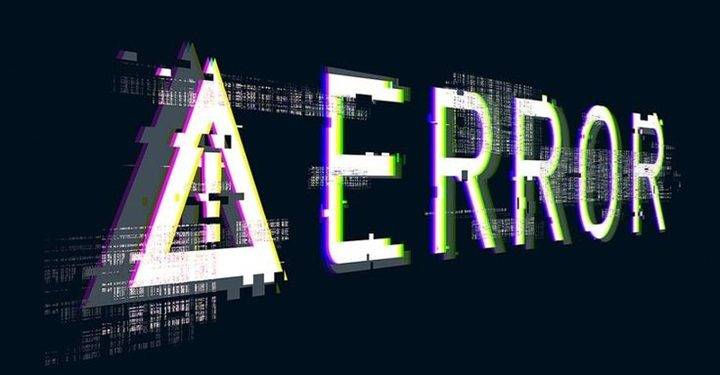errordomain=nscocoaerrordomain&errormessage=impossible de trouver le raccourci spécifié.&errorcode=4. This error is part of the NSCocoaErrorDomain, which is used by macOS to describe various issues related to the Cocoa framework. In this article, we’ll delve into the specifics of this error, its common causes, and effective strategies to resolve it.What is NSCocoaErrorDomain?

Overview of NSCocoaErrorDomain
NSCocoaErrorDomain is a domain used by the Cocoa framework on macOS to classify errors. The Cocoa framework provides the core infrastructure for macOS applications, including handling data, user interface elements, and application logic. Errors in this domain can be related to file operations, data management, or other system tasks.
Components of the Error Code
The error message impossible de trouver le raccourci spécifié translates from French to “unable to find the specified shortcut”. The error code 4 is a specific identifier that provides additional context about the issue.
Decoding the Error Message
Error Domain
- Error Domain: NSCocoaErrorDomain: This indicates that the error is related to the Cocoa framework. It’s a general domain covering various potential issues within Cocoa-based applications.
Error Code
- Error Code: 4: This particular code typically corresponds to a file-related error, such as a missing file or an inaccessible path.
Error Message
- Error Message: impossible de trouver le raccourci spécifié: This means that the system is unable to locate a shortcut or alias that was expected to be present.
Common Causes of the Error
Missing or Moved Shortcuts
One of the primary reasons for encountering this error is that the shortcut or alias the system is trying to access no longer exists at the specified location. This can occur if:
- The file or folder has been moved or deleted.
- The shortcut was created pointing to a location that no longer exists.
Corrupted Shortcuts
Shortcuts or aliases can become corrupted due to various reasons, such as:
- System crashes or unexpected shutdowns.
- Software conflicts or bugs.
- Improper handling of file paths.
Permissions Issues
In some cases, the error may be related to permissions. If the application or user does not have the necessary permissions to access the file or folder, it may result in this error.
How to Troubleshoot and Resolve the Error

Verify the Shortcut Location
- Check the Shortcut: Ensure that the shortcut or alias is pointing to the correct location. Right-click on the shortcut and select “Show Original” to see where it leads.
- Locate the Target: Verify that the file or folder the shortcut is pointing to exists at the specified location. If it has been moved or renamed, update the shortcut accordingly.
Repair or Recreate Shortcuts
- Delete and Recreate: If the shortcut is corrupted, delete it and create a new one pointing to the correct file or folder.
- Use Finder: Open Finder and manually navigate to the location of the file or folder, then create a new shortcut by dragging it to the desired location.
Check Permissions
- Inspect Permissions: Right-click on the file or folder and select “Get Info”. Check the “Sharing & Permissions” section to ensure you have the necessary read and write access.
- Adjust Permissions: If permissions are incorrect, click the lock icon to make changes and grant yourself or the application the necessary access.
Rebuild System Shortcuts
- Reboot the System: Sometimes, simply restarting your Mac can resolve issues related to shortcuts and file paths.
- Reset Finder Preferences: Go to Finder > Preferences and reset the settings if they appear to be causing issues.
Advanced Troubleshooting
Use Terminal Commands
- List Aliases: Use the Terminal to list aliases and their destinations by running the command
ls -lin the directory where the alias is located. - Repair Disk Permissions: Although macOS no longer includes a direct tool for repairing permissions, you can use Disk Utility to verify and repair your disk.
Reinstall macOS
If the error persists and seems to be affecting multiple shortcuts or system operations, consider reinstalling macOS. This should be a last resort after all other troubleshooting steps have been exhausted.
Preventing Future Errors

Regular Backups
Ensure that you have regular backups of important files and shortcuts. Use Time Machine or another backup solution to keep copies of your data.
System Maintenance
Perform regular system maintenance, including updates to macOS and applications, to minimize the risk of errors. Keeping your system and software up-to-date can prevent many common issues.
Educate Yourself on Shortcuts
Understanding how shortcuts and aliases work on macOS can help you troubleshoot and prevent issues. Learn how to create, manage, and troubleshoot these elements effectively.
The error errordomain=nscocoaerrordomain&errormessage=impossible de trouver le raccourci spécifié.&errorcode=4 can be a nuisance, but understanding its components and potential causes can simplify the troubleshooting process. By following the outlined steps, you can resolve the issue and prevent future occurrences. Remember to regularly back up your data and maintain your system to avoid similar errors in the future.










